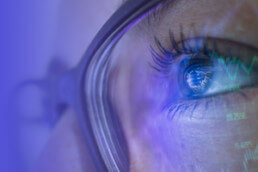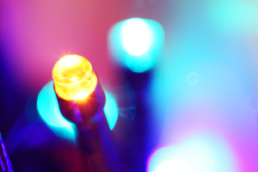Can color affect your internal clock? The answer may surprise you!
Scientists at the University of Manchester have been conducting experiments on mice to measure the effects of different colors and shades of light on mammals. The team has pinpointed a part of the brain that is common to all vertebrates called the Suprachiasmatic nucleus (SCN). In layman’s terms, that’s where our internal clock is located.
When the team exposed test mice to light of varying intensities of color and brightness, their SCN became quite active. To further test whether the colors were really triggering a response in the internal clocks of the mice, the team then built an artificial sky with sets of different colored LEDs to simulate different daylight and nighttime shades as well as different intensities of color and light.
Because the internal temperature of mice increases during night time hours, the scientists were able to monitor and track the impact of different colors and shades of light on their rodent subjects. They did this by measuring the electrical chatter of SCN neurons as the mice were exposed to changes in color. The results were significant when the mice were exposed to blue light, which is prevalent around dusk.
The scientists also experimented with using unnatural colors in the artificial sky to see if the mice would respond differently. The artificial light confused their internal clocks causing an increase in their body temperature. To further test the effects of the colors and shades, the scientists then separated mice that were more responsive to color changes than those that were not. They then took SCN cells out of the two groups and found that the cells extracted from the mice that did not readily react to the color shifts fired slower than those cells extracted from mice that did perceive the color and shade changes. This proves that the link between color and SCN stimulation is very definitely present.
The news here is this study may help treat humans who suffer from seasonal depression and those who suffer from jet lag by using color to stimulate the SCN when it’s out of sync. The treatments may be years away, but the understanding of how color and shade of light effects our internal clocks is now beginning to become better understood.










